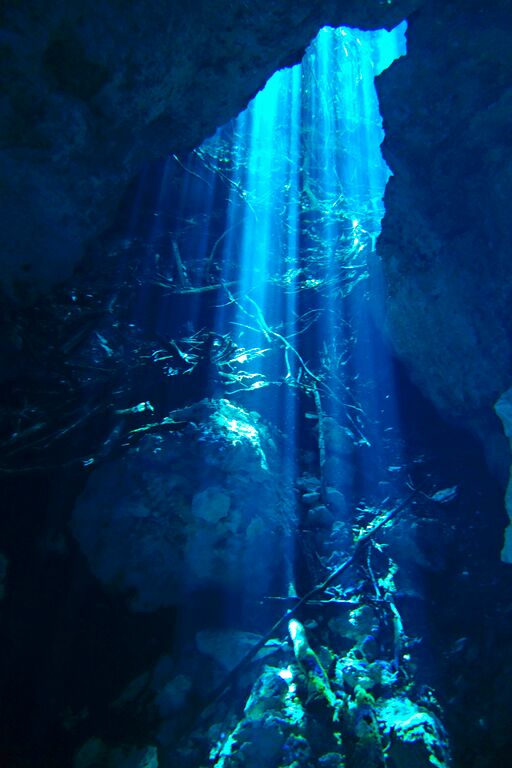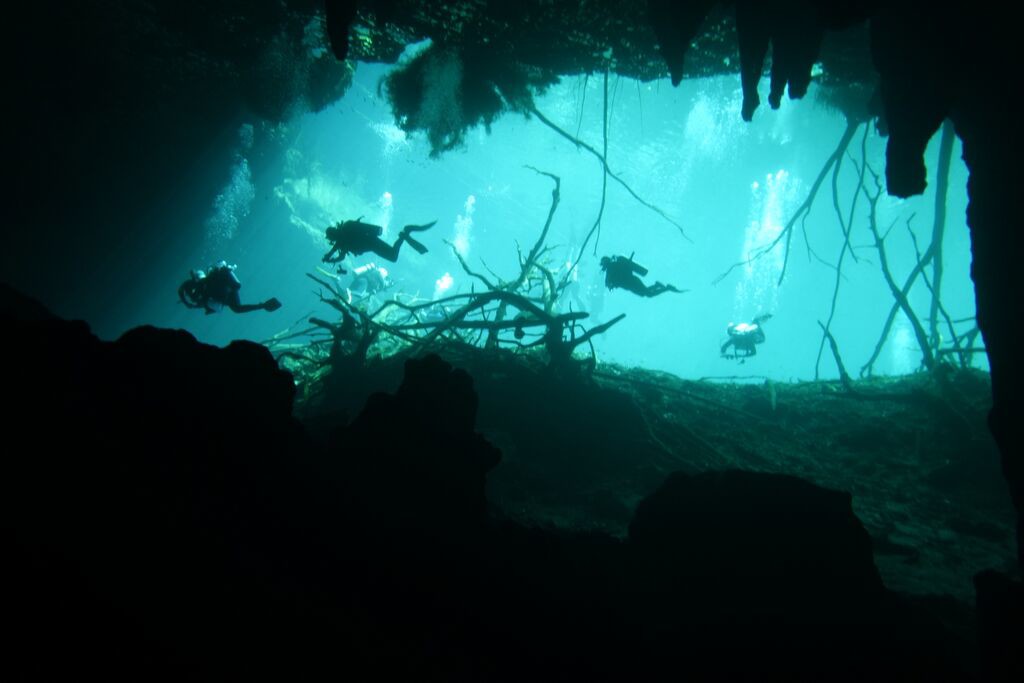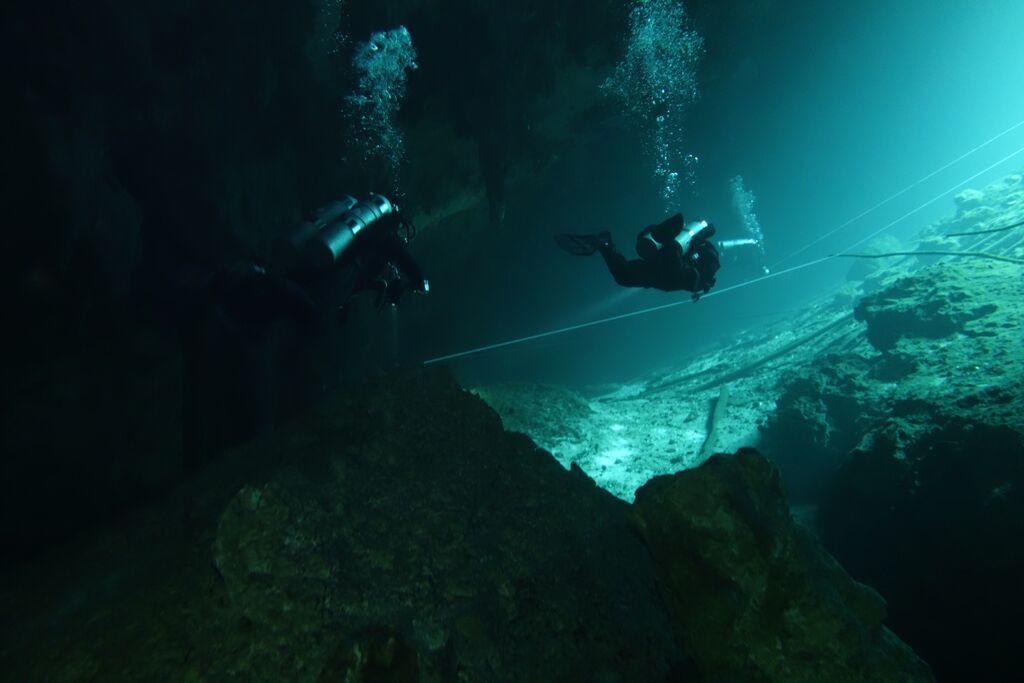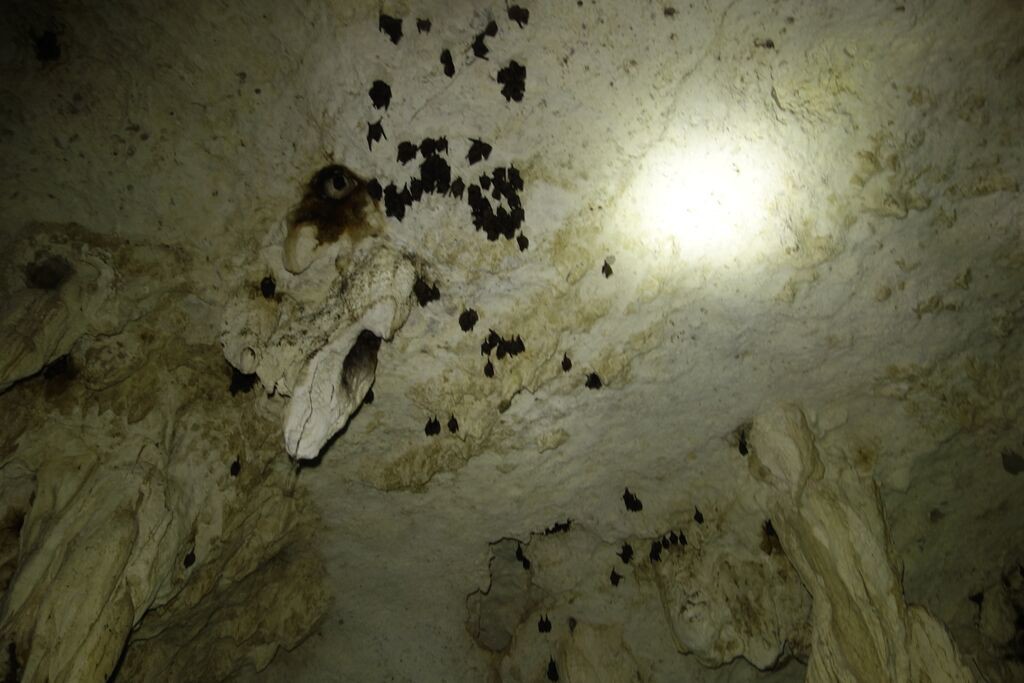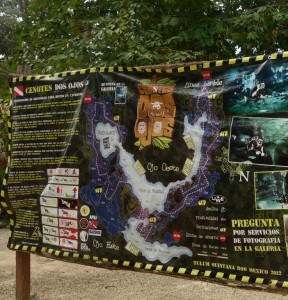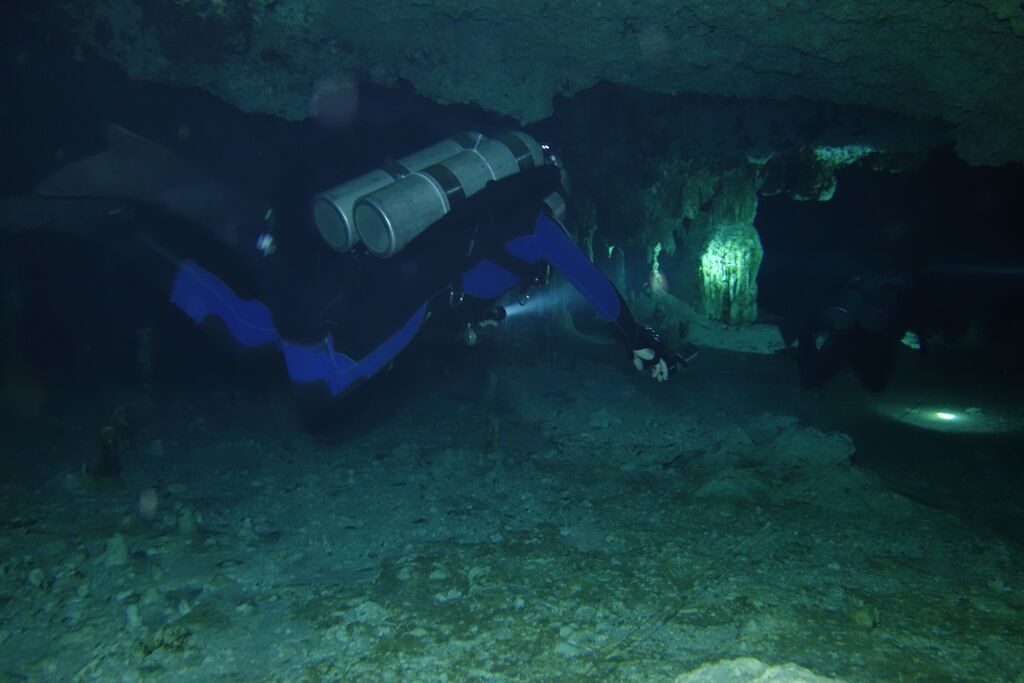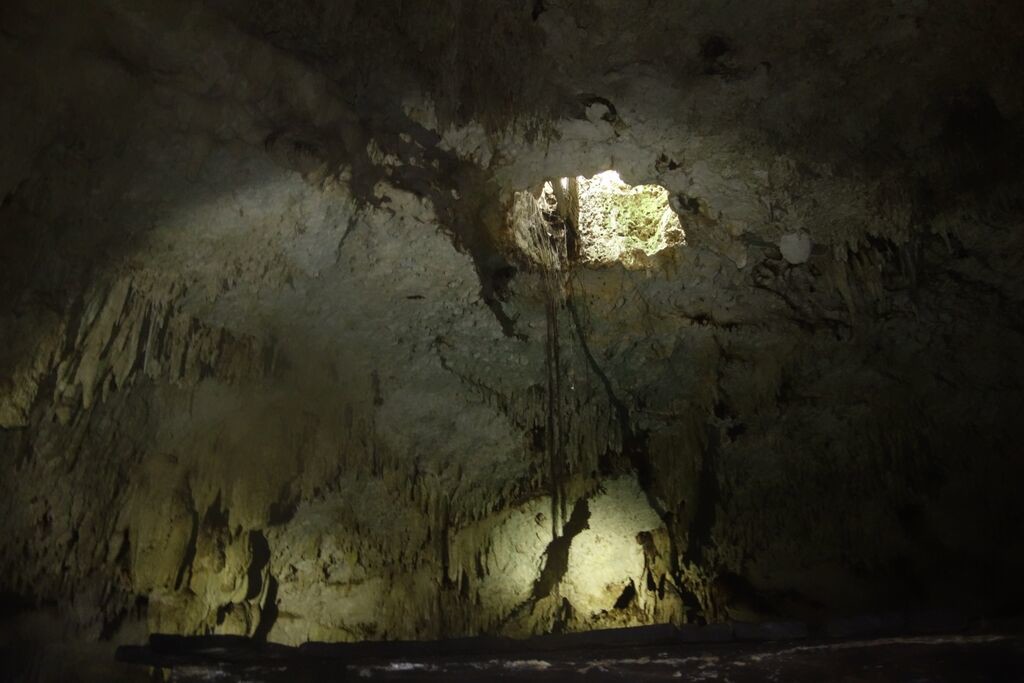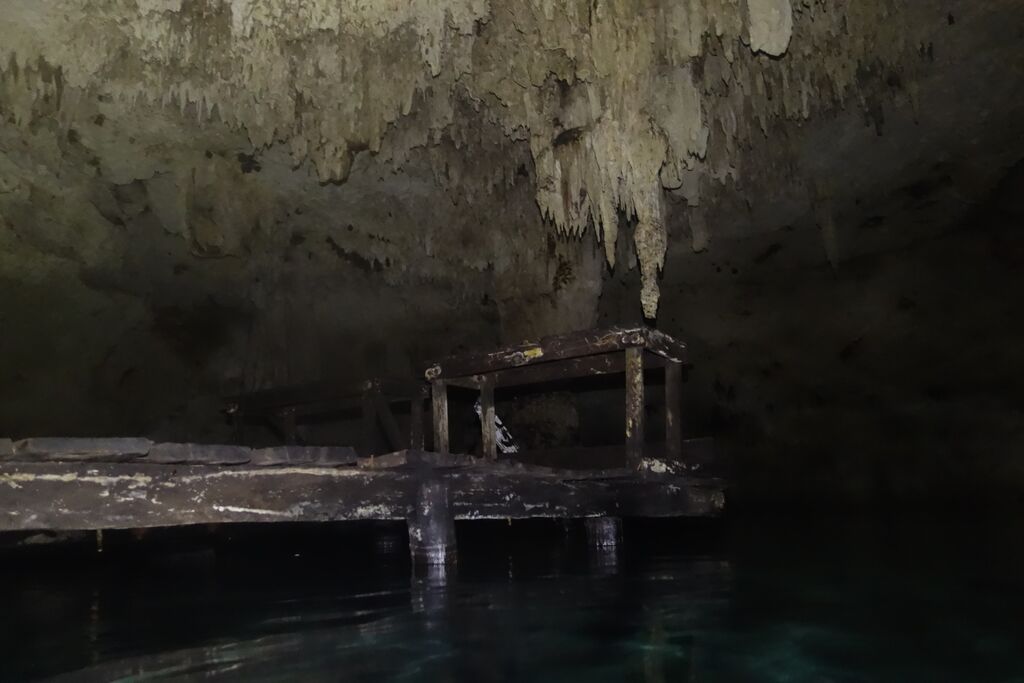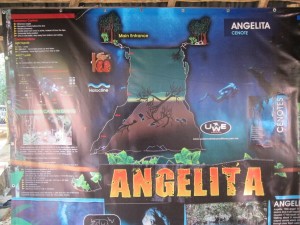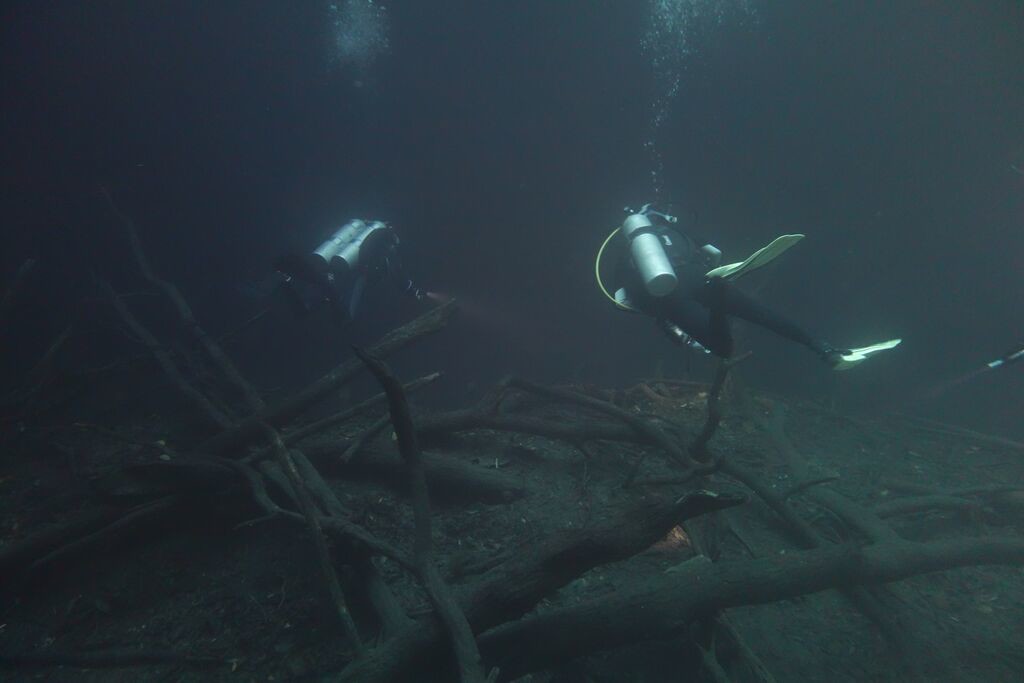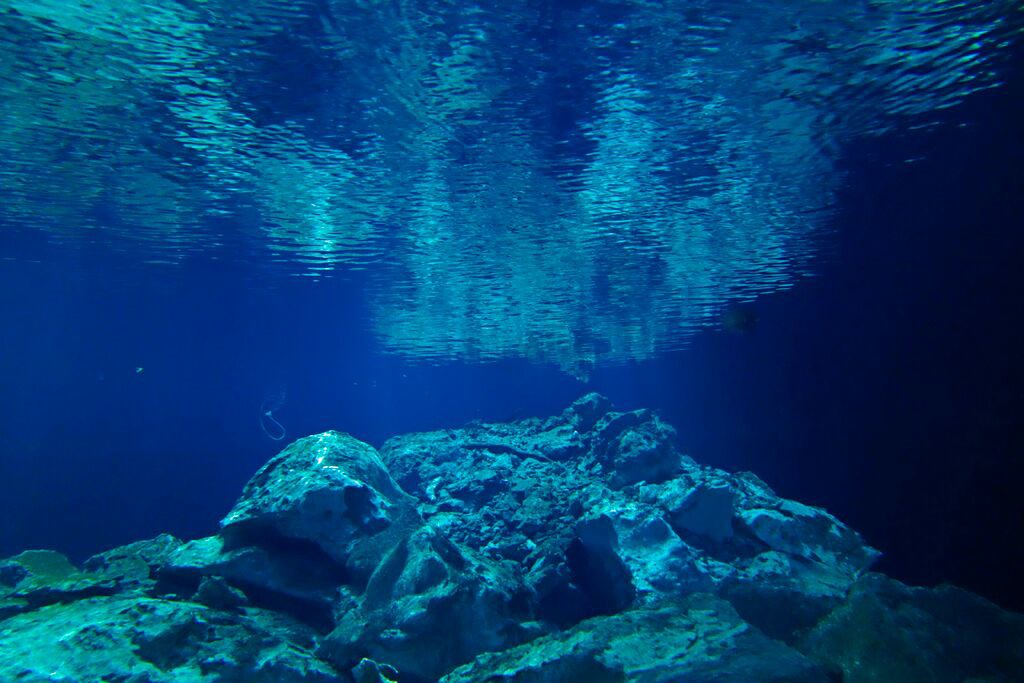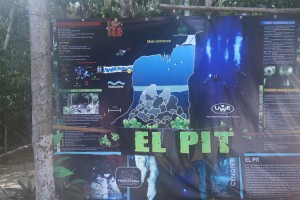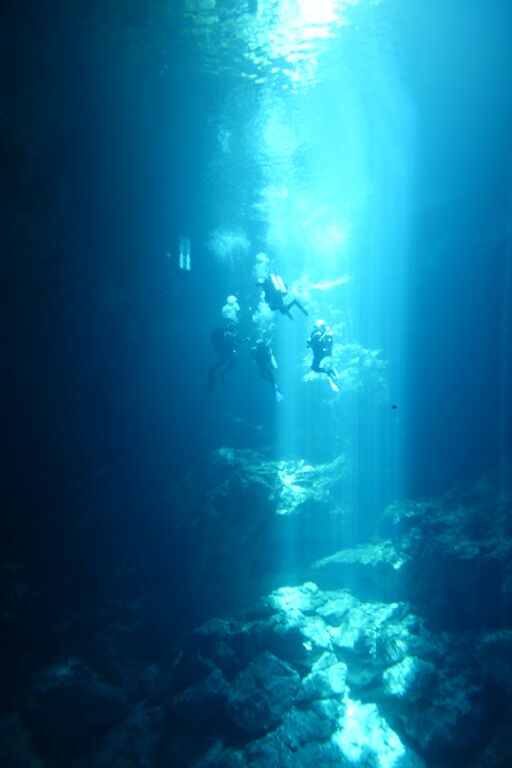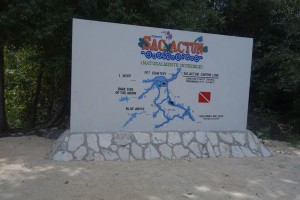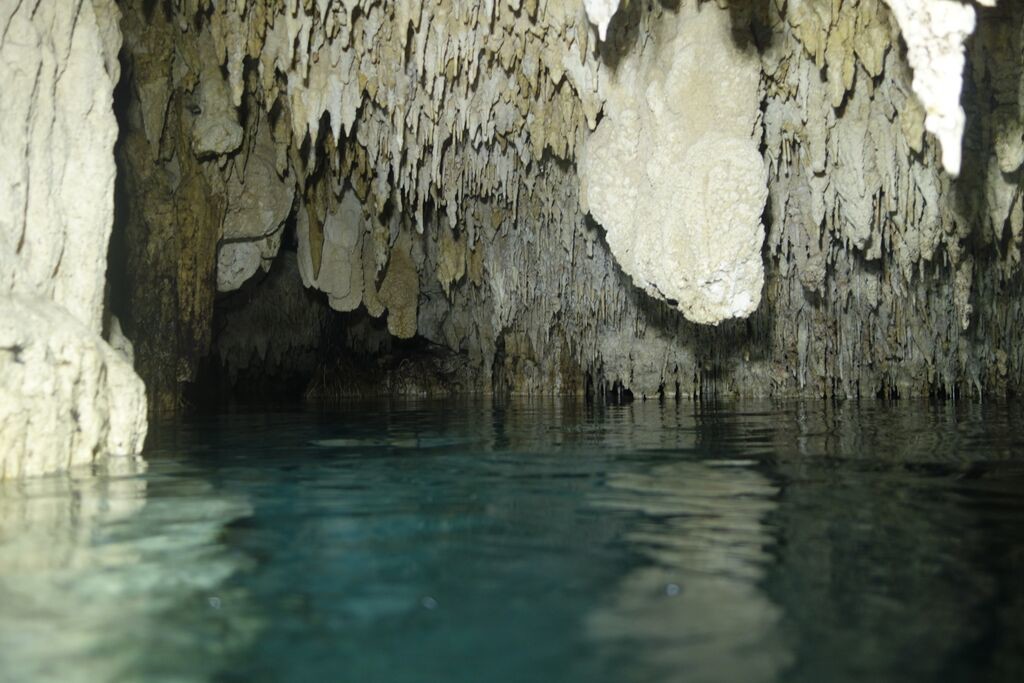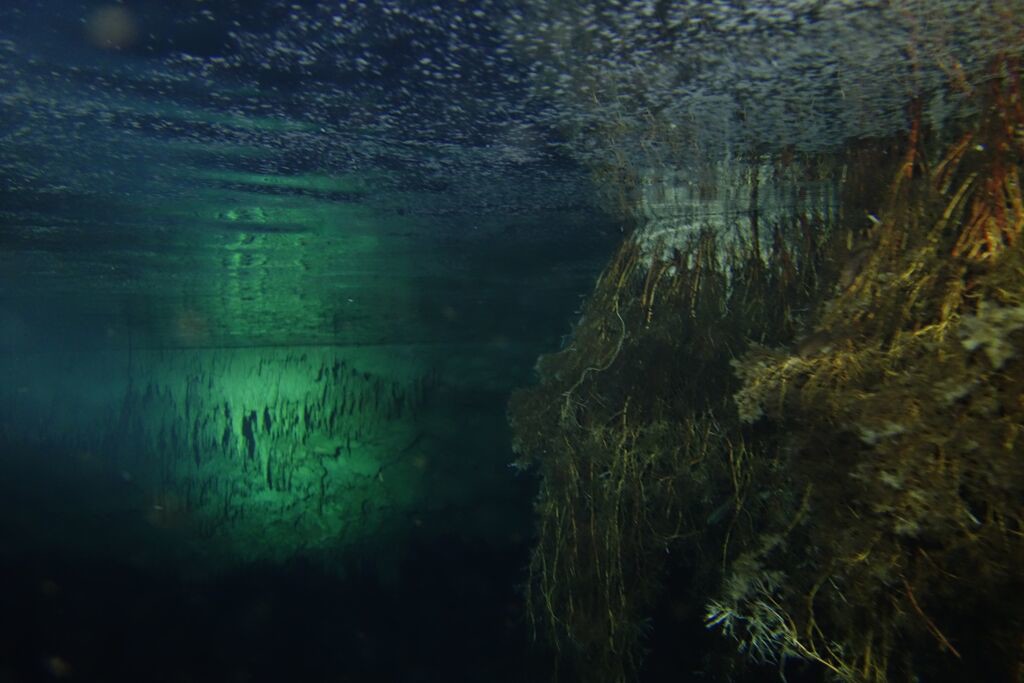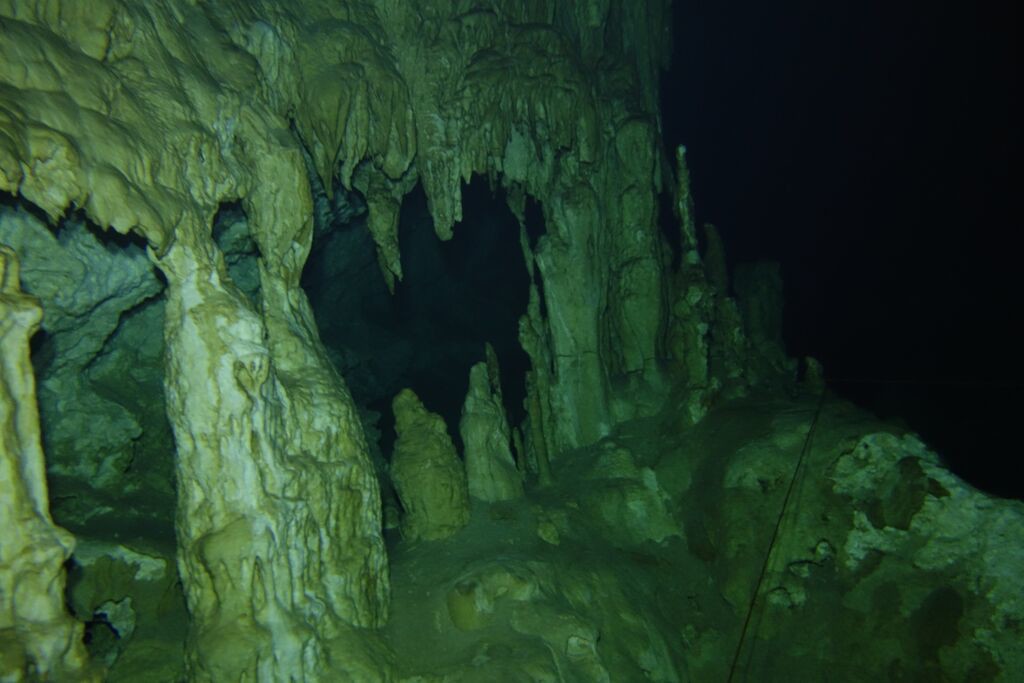News
Mayan Magic: Cavern Diving in Mexico’s Yucatan Peninsula
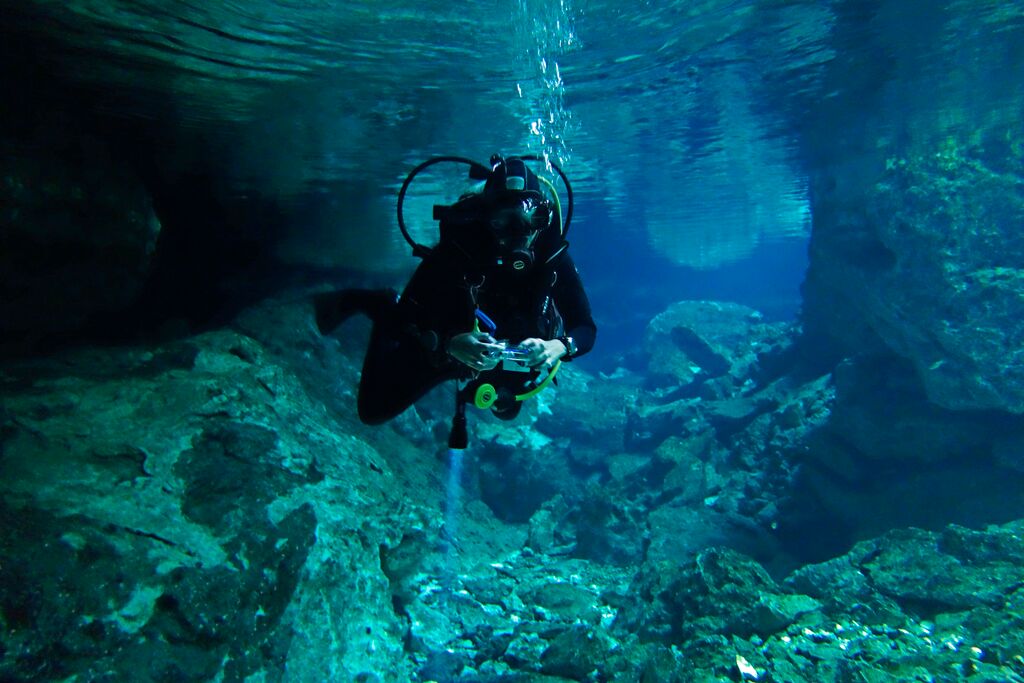
Southern Mexico’s Yucatan peninsula is the ancestral home of the Maya people whose ancient cities and monolithic temples can be found everywhere from Cancun in the North to Honduras 800 miles to the South.
The region consists of a gigantic limestone cap riddled with hundreds of subterranean rivers which over the millennia have carved out beautiful caves and passages on their way to the sea.
Over time some cave roofs have collapsed revealing open bodies of water called Cenotes which the Maya believed were gateways to the underworld and the home of their Gods.
Today they allow adventurous divers access to a magical flooded world where they can marvel at intricate limestone formations and dazzling light shows.
In February 2015 a group of fourteen current and former members of Southsea SAC (BSAC 009) set off to discover what makes the caverns of the Yucatan such a special place to dive.
As we were all experienced divers, our aim was to enjoy a “Rolls –Royce” tour of the area’s subterranean dive sites under the expert guidance of professional cave guides Lanny and Claire Vogel of Underworld Tulum, packing in as much diversity, quality and adventure as possible.
Day 1: Car Wash & Gran Cenote
Feeling our way
Having been met by Lanny and Budgie (yes, the same Budgie who skippered Top Gun out of Portland back in the day) we drove to Underworld Tulum’s base to be briefed on cavern diving protocols, divided into teams and acquainted with our cavern diving kit.
I was part of “Team Claire” led by cave diving expert Claire Vogel.
Our first Cenote dive would be at “The Car Wash”, so called because local taxi drivers used to wash their vehicles in the cenote’s clean, fresh water.
Being Cavern diving novices we began with a check out dive in a relatively open and unbreakable training area within the site, where we could safely practice basic cavern diving techniques and hone our trim and buoyancy skills before venturing underground.
Exercises successfully completed, an excited if slightly nervous “Team Claire” began its descent into the Cenote’s gaping maw to reach its hidden caverns.
Once inside the cavern system however, all apprehension vanished as we entered a magical realm straight out of Lord of the Rings and marvelled at the spectacular formations dripping water had created during the centuries these caves had been “dry”.
After 15 minutes underground we reached our turn around point and it was time to return to the light and the world of man.
With the opening dive successfully completed we re-loaded the trucks and headed to our next site, Gran Cenote.
This dive provided more opportunities to refine our Cavern diving skills as the route was a bit longer, with slightly narrower passages and less natural light, though we did plan to surface in a large air dome complete with resident bat population to check we were all happy before continuing on.
After spending time watching the bats scoot about in the torch light, it was time to push on and complete our dive as another team came in to enjoy the show.
Day 2: Dos Ojos
Good buoyancy required
The Dos Ojos site consists of two flooded tunnels which meet in a Cenote to form an underwater letter “Y”. When entering the system, the left passage takes you to “Bat Cave” whilst the right goes to the “Barbie Line”.
For our first dive, Claire led us into the right hand passage and onto the “Barbie Line” before continuing around the line’s circular route back to the entrance. As the line twisted its way through the cavern past spectacular rock formations, sometimes there was less than 3m of water between the roof and the fine powdery sand below making BSAC gold standard buoyancy essential to avoid dangerous silt outs.
On our second dive, we followed the left hand line into the Bat Cave cavern where conditions were even more challenging with only an average depth of 3.3m to play with. After finning through dimly lit passages for what seemed like an eternity, we emerged into a large domed cave with a small opening in the roof through which the sunshine streamed.
Under the hole was a large diving platform rising from the water on stilts. This had been built as a dive base by the early cave explorers who’d lower themselves and their kit into the cave using ropes dropped through the hole in the cave roof; real Indiana Jones stuff!
Day 3: Angelita and Tajma-Ha
Two signature sites
Angelita Cenote had long been on our cenote “bucket list” as not only is the site located in a beautiful setting, it’s also technically very demanding. Shaped like a tooth, the “crown” forms a large open water area whilst the “roots” slope down either side of a central mound to well over 50m.
An unusual feature of this site is the thick green layer of Hydrogen Sulfide-rich water permanently trapped between the fresh water above and the salt water below.
From above the layer looks like solid ground, from which the skeletal remains of trees submerged hundreds if not thousands of years ago emerge as if through a green mist.
Descending through the Sulfide layer to the dark waters beneath, we gazed at the drowned trees before returning to the light and making our way slowly back to the surface.
In the early days of cavern exploration, divers flying over the dense jungle looking for open water would drop streamers into the trees to mark any promising sites before walking in with all their gear to explore whatever they had found. Tajma-Ha was one of the many spectacular sites discovered in this way.
Billed as one of the most beautiful cavern systems in the area, our dive would take us on a circular route past two different Cenotes before returning us to the entrance/exit point.
We followed the guide line clockwise, skirting the Puntos de Luz air dome before moving onto the beautiful Sugar Bowl Cenote.
There we paused for a moment’s reflection on the sights we had seen before continuing on and back to our start point through more spectacular rock formations.
Day 4: The Pit & Pet Cemetery
The longest cave system in the world
Located 6 miles from the nearest tarmac road in what was once dense jungle, The Pit was accidently discovered in 1985 by the Mexican Army who were conducting an aerial assessment of damage caused to the area by Hurricane Elena. Now known to be connected to the Dos Ojos system, it forms part of the third longest underwater cave system in the world (52 miles).
The site itself looks like a goatskin water bottle. A relatively narrow entrance leads divers into a large flooded cavern whose rock strewn floor lies some 40m below.
Staying close to the remaining cavern roof the route initially meandered its way around a large undercut passing beautiful stalagmites before spiralling downwards towards the bottom. At 28m there’s a white Hydrogen Sulfide layer through which a rubble hill protrudes like an underwater island. Approaching the end of our allotted bottom time we began our ascent, riding the shafts of sunlight as they slowly carried us up to the surface.
Pet Cemetery, despite its rather macabre name, was one of the best sites we dived all trip.
Part of the longest system of underwater caves on earth (207 miles), we would dive the Sac Actun (Mystic River) cavern line route.
Running for 750 meters at an average depth of 4m, this dive was the longest and most technically demanding we had so far attempted.
Entering the system at roughly the line’s mid-point, we followed it in a loop, thoroughly enjoying the amazing rock formations and visiting a spectacular air dome before returning home.
Day 5: Dream Gate
An amazing two for one
Located two miles from the Dos Ojos system, Dream Gate has an upstream and a downstream circuit providing divers with two great dives at one amazing location.
We split into two teams to tackle the upstream line travelling in opposite directions to minimise traffic through the narrower parts of the route.
The average depth was around 4m with the line skirting rows of limestone columns lined up like the bars of an old fashioned jail.
After about 15 minutes we surfaced in a small air dome, home to a colony of rare Mini Bats indigenous to this region. This was a very strange place. Vines climbed the cave’s stone columns towards the light creating an underground forest in which limestone pillars took the place of trees.
Our second dive was in the downstream cavern. Here there were many more columns, stalactites and stalagmites to navigate around than in the upstream section.
Sometimes the columns were so tightly packed they formed lattice like screens providing tantalising glimpses of potentially unexplored routes to tempt the unwary explorer from the true path.
Is this for you?
Diving Yucatan’s Cenotes is undoubtedly an amazing experience and definitely not one to be missed. Cavern diving presents divers with some extra challenges however; in particular they should be trained and practiced in the techniques commonly used when diving in dimly lit, overhead environments and be able to consistently deliver excellent buoyancy control throughout their dives. If that’s you though, go for it, you won’t regret it!
Essentials
When to go:
January to March is Yucatan’s least humid period with average daytime temperatures a balmy 25°C. In the caverns the water temperature averaged 24°C, so a full length 3-5mm wetsuit was perfect.
Getting there:
Probably the easiest place for most UK travellers to fly into is Cancun airport some 75 miles north of Tulum and the main Cenote areas. The transfer time is 1.5 – 2hrs by coach/private car on well paved roads.
Flights are from £650 return with Virgin, including a whopping 56kg luggage allowance.
Logistics:
Being a large group we contracted Underworld Tulum to source and deliver everything we required, from airport transfers to specialist diving equipment and guides. Their logistical expertise and “can do” attitude resulted in a totally hassle free trip, just what we wanted.
Diving Costs:
$150 USD per day which included a fully qualified cavern guide, all cavern diving equipment inc. twin sets, wings & regs (Single cylinders are also available if required), NITROX/Air fills, lunch (fruit, cake and soft drinks), hotel pick-ups, site fees and inter-site transportation.
Accommodation:
Underworld Tulum have six 2 bed S/c apartments for rent at their base near Tulum (prices from $80 USD per apt/per night). Should people want to make their own arrangements however, there’s plenty of accommodation around Tulum to suit all budgets.
Non-diving activities:
Many hotels organize mini-bus/coach tours with English speaking guides to nearby Mayan ruins (cost approx. $70 USD pp) and there are dedicated snorkeling areas at most Cenote sites.
Gear News
Introducing the TR-80, IR-50 and CS-30 Regulators from DYNAMICNORD

Whether you are a beginner or a professional diver – with the three new main regulators from DYNAMICNORD, everyone will find their favourite regulator. They all look super stylish.
Excellent performance with the TR-80
Quality and performance are the be-all and end-all for regulators. It is not for nothing that the TR stands for Tec Reg. The innovative design of the TR-80 guarantees absolute reliability – even in ice-cold waters.

Perfect breathing effort at 0.8 J/l / certified for diving in waters below 10 degrees / structural design made of solid brass for best cold protection / membrane-compensated design with dry seal of the first stage / reduced exhalation effort thanks to optimized exhalation membrane and bubble deflector / adjustable Venturi (dive/predive) and adjustment knob for individual inhalation comfort / innovative design of the front cover prevents free-flow in strong currents or when diving with scooters / design made of sandblasted brass, matt chrome finish / 2 HP and 4 LP outlets / mouthpiece made of high-quality, anti-allergic silicone for maximum comfort.


Amazing underwater adventures with the IR-50
The IR-50 is the top regulator for advanced and experienced divers. Natural breathing is the essence of this regulator.

Ideal breathing effort at 0.8 J/l /certified for diving in waters below 10 degrees / compensated membrane / adjustable venturi (dive/predive) and adjustment knob for individual inhalation comfort/ outlet valve and deflector for minimum exhalation effort and reduction of bubbles on the face / design made of sandblasted brass, matt chrome finish / 2 HP and 4 NP outlets / mouthpiece made of high-quality, anti-allergic silicone for maximum comfort.


The Workhorse – our CS-30
For diving centres and diving beginners – the workhorse stands for strong construction, reliability and robustness. Perfect for your training.

Optimal breathing effort at 0.8 J/l /recommended for diving in waters above 10 degrees / non-compensated piston / adjustable venturi (dive/predive) / outlet valve and deflector for minimum exhalation effort and reduction of bubbles on the face / design made of sandblasted brass, matt chrome finish / 1 HP and 3 NP outlets / mouthpiece made of high-quality, anti-allergic silicone for maximum comfort.


Octopus OP-30
The OP-30 is the ideal addition to all DYNAMICNORD regulators. It is identical in construction to the CS-30.

The TR-80, IR-50, CS-30 (DIN & INT) regulators and the Octopus OP-30 are available from DYNAMICNORD dealers and in the online store.
DYNAMICNORD – Your Outdoor Companion.
Marine Life & Conservation
Paul Watson Released as Denmark Blocks Japan’s Extradition Bid

Renowned anti-whaling activist Paul Watson has been released from custody in Greenland after spending five months in detention. Denmark’s Justice Ministry rejected Japan’s request for his extradition, citing insufficient guarantees that his time already served in custody would be credited against any potential sentence.
The 74-year-old Canadian-American was arrested on July 21 in Nuuk, Greenland’s capital, when his ship docked to refuel. His arrest was based on a 2012 Japanese warrant related to a 2010 encounter in Antarctic waters. Japan alleged Watson obstructed operations and caused damage to a whaling research ship during efforts to disrupt illegal whaling. Watson has consistently denied these claims, maintaining his commitment to marine conservation.
Denmark, which oversees extradition matters for Greenland, concluded that while the legal conditions for extradition were met, the lack of assurances from Japan regarding time-served credit made extradition untenable.
In a video shared by his foundation, Watson expressed gratitude and relief, saying, “After five months, it’s good to be out… and good to know they’re not sending me to Japan.” He added that the most difficult part of his time in custody was being separated from his two young sons.
Watson is a pioneering figure in marine conservation, known for founding the Captain Paul Watson Foundation in 2022 after decades of activism with the Sea Shepherd Conservation Society. His bold efforts to defend marine life have earned him widespread support, including from celebrities and conservationists. His work has also been featured in the acclaimed reality TV series Whale Wars.
Watson’s lawyer, Jonas Christoffersen, praised the decision, stating, “We are happy and relieved that Paul Watson is now free.” He added that Watson is eager to reunite with his family and continue his vital work.
The arrest occurred while Watson’s vessel, the M/Y John Paul DeJoria, was en route to the North Pacific with a team of 26 volunteers to intercept a Japanese whaling ship. His foundation described the arrest as politically motivated and emphasized that Watson’s actions were focused on ending illegal whaling practices.
Japan resumed commercial whaling in 2019 after leaving the International Whaling Commission, asserting that whale meat is a cultural tradition. Conservationists, however, continue to challenge these practices, highlighting their impact on marine ecosystems.
Despite the challenges, Watson remains steadfast in his mission to protect marine life and bring attention to whaling practices. His dedication to ocean conservation has made him a globally respected advocate for the environment.
-

 News2 months ago
News2 months agoIconic SS United States to become the World’s Largest Artificial Reef
-

 News3 months ago
News3 months agoBook Review – 52 Assignments: Underwater Photography
-

 Gear News3 months ago
Gear News3 months agoDYNAMICNORD – New German diving brand enters the British market
-

 News3 months ago
News3 months agoExploring Cenote El Pit: A Diver’s Dream
-

 Gear News3 months ago
Gear News3 months agoTry BARE drysuits (and maybe even win one!) this Friday with Sea & Sea at North West Dive Fest
-

 Marine Life & Conservation3 months ago
Marine Life & Conservation3 months agoBook Review: Coral Triangle Cameos
-

 Blogs2 months ago
Blogs2 months agoDive the Egyptian Red Sea this Autumn with Regaldive
-

 News3 months ago
News3 months ago2024 Ocean Art Underwater Photo Competition Announced


